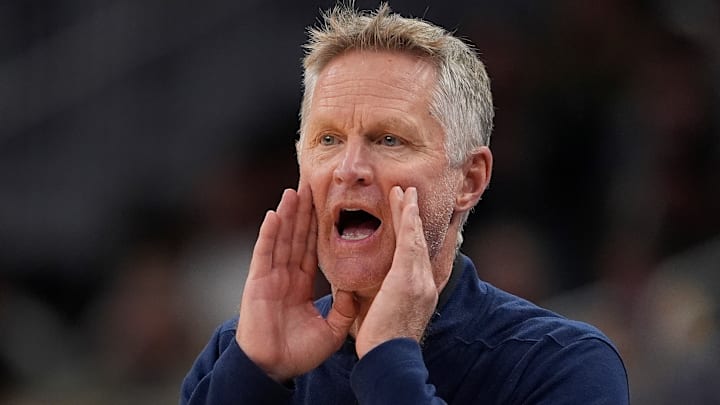Golden State’s offseason maneuvering has taken an intriguing turn. After being forced to waive veteran sharpshooter Seth Curry during preseason due to financial constraints, the Warriors are now eligible to bring him back as an unrestricted free agent — a move that could prove critical as the team grapples with offensive inconsistencies.
The decision to waive Curry earlier was strategic. Sources indicate the expectation was always that the Warriors would re-sign him once their payroll fell below the second apron, allowing roster flexibility. However, there’s no guarantee Curry will return immediately, as the front office continues to analyze performance data from the season’s opening stretch.
NBA insider Marc Stein reported that Golden State may delay re-signing the younger Curry brother, possibly to maintain salary cap flexibility for other potential moves later in the season. “One option Golden State is believed to be considering is waiting a bit longer beyond that date to create some added cushion beneath the second apron,” Stein noted.
This calculus is coming into sharper focus as the Warriors confront pressing offensive challenges. Golden State started the season impressively, winning four of their first five games. But in the past six contests, the team has stumbled, losing four and failing to consistently impress — particularly in Sunday’s matchup against the Indiana Pacers, where they only began to assert control late in the third quarter.
Statistically, the struggles are glaring. Over the recent six-game stretch, the Warriors rank 24th in overall offense and 23rd in 3-point percentage at just 33.7%. Bench shooting hasn’t fared much better, with the unit hitting 33.2% from deep. Curry, who connected on a career-high 45.6% of 3-point attempts with the Charlotte Hornets last season, could immediately address these gaps.

Yet uncertainty remains. Curry, 35, didn’t participate in preseason games, leaving coaches and analysts with limited insight into how he would fit into Steve Kerr’s rotation. The Warriors’ front office will have to weigh his potential contributions against roster timing and financial strategy.
Another factor is the underwhelming performance of current guards. Buddy Hield, for example, has struggled from deep, shooting a career-low 32.6% on 3-pointers and just 43.7% overall. Curry’s presence could provide both shooting stability and spacing for the team’s stars. However, the opportunity may shrink if the Warriors delay, especially with veteran guard De’Anthony Melton expected to return from injury later this month.
Curry’s recent performance with the Hornets offers reassurance. Last season, he appeared in 68 games, averaging 6.5 points and 1.7 rebounds while shooting 47.8% from the floor and 84.6% from the line. His elite perimeter shooting could be a timely injection for a Warriors team desperately seeking consistent offense.
Golden State now faces a strategic crossroads: move quickly to re-sign Curry and bolster their shooting, or wait to maximize roster flexibility and risk losing an opportunity to integrate one of the league’s most reliable 3-point threats. Fans and analysts alike will be watching closely — because the team’s offensive fortunes may hinge on this decision.
Leave a Reply